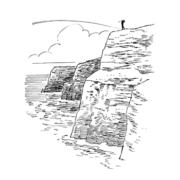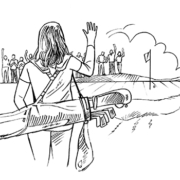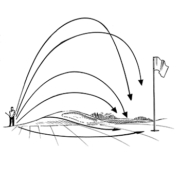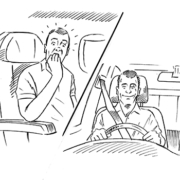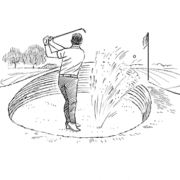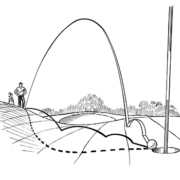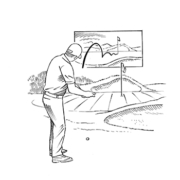Who are you scoring for?

It may seem a strange question to ask about your game, but it is one we would like you to consider. Who are you scoring for?
Over the years we have seen so many players (including ourselves), fall into the trap of confusing golf as something you are, as opposed to something you do. When your whole self-worth hangs on the line with the outcome of a score, it can be a pretty lonely place. When your ego is attached so much to the direction a golf ball takes, you are walking on an emotional tightrope.
When ‘you’ as a human being are on the line when you play the game, too much is at stake. Golf is something we do, not what we are.
Our value as a human being is a given: one person is no better than another and has no more value.
If you have a bad day as a golfer, you have not had a bad day as a person. It may seem a touch dramatic, but we have found over and over again, that very little golf improvement can take a lasting effect unless you are able to break some of these underlying and often unconscious barriers.
The way to practically apply these concepts to your game is to fully embrace your understanding of acceptance. If there is a more powerful tool in your golfing mental toolkit than acceptance, we have yet to discover it.
Acceptance, as a concept, is really difficult to grasp when you are ultimately looking to improve your scoring.
We need to make really, really clear that acceptance is not resignation. You are not giving up on the desire to hit good shots or shoot lower scores. What you are doing is to be willing to truly embrace any outcome the game wants to throw at you.
Good, bad or neutral, one thing for certain is during any round of golf, no matter how good it is, you will always get a sprinkling of all three.
Our meditation teacher, Vin Harris, often says: “Most human suffering is an unwillingness to accept the experience as it is.”
Think about this for a moment and perhaps repeat it back to yourself. It is that important! We spend so much of our lives resisting thoughts, feelings and sensations. We don’t want to feel the bubble of emotion arising within us. We don’t want to experience the sense of loneliness, frustration or disappointment, yet it is the resistance to experiencing these sensations actually happening which keeps us stuck.
There has never been a truer phrase than ‘whatever you resist, you strengthen’. When you resist the feeling of anxiety and believe it shouldn’t exist, you actually halt the natural process of energy moving through your body. E-motion. Energy in motion. The energy wants to move through you, it wants to dissipate. It is totally counterintuitive and paradoxical to embrace the notion that, if we are prepared to be with whatever is arising within us, then it will naturally dissipate.
Taken from The Lost Art of the Short Game by Gary Nicol and Karl Morris – with a foreword from Bob Vokey, the godfather of wedges.
Available now in hardback (£19.95) and Kindle (£9.99) formats.

